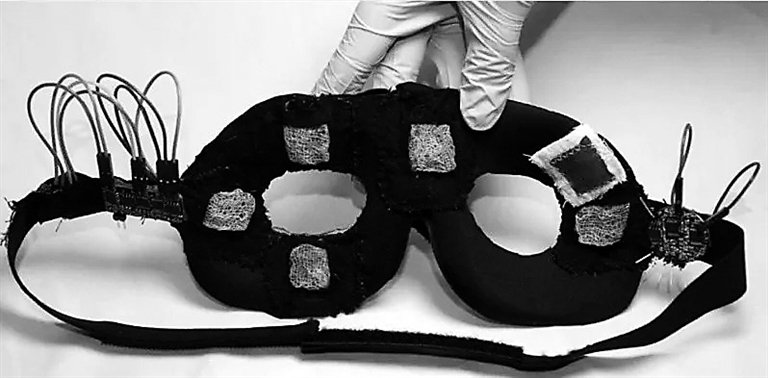
AN eye-tracking mask that also measures the wearer’s pulse could be used to study people’s reactions to things they are viewing. Trisha Andrew at the University of Massachusetts Amherst and her colleagues developed two fabric-based electrodes, which enable continuous monitoring of the wearer’s eye movements and pulse for up to eight hours. Because the electrodes are made of fabric, the mask is also washable and reusable. This could make it useful for health monitoring, particularly of sleep. Eye movement changes are important indicators of sleep phase, such as rapid eye movement (REM) and non-REM sleep, says Andrew. Current technology for eye movement tracking relies on electrooculography (EOG), a technique designed over 50 years ago to measure the eye’s electrical potential changes. “The problem is that you have to stick those adhesive electrodes on your face. But people tend to be a little finicky about stuff put on their face, unsurprisingly,” Andrew said in a paper published in the journal Matter. One challenge in designing smart wearable is developing products that provide both accuracy and comfort. To achieve that, the research team developed a novel hydrogel electrode by growing polymers on fabrics. Reaching the nooks and cranny of the fiber pattern, the hydrogel polymer bonds to and covers the fabric’s topology, resulting in a mechanically stable coating that is imperceptible to one’s eye and touch, the team said. They then combined these hydrogel electrodes with a pulse sensor to create an eye mask that can track eye movements and collect cardiac signals from the artery located at the brow bone. Andrew and her colleagues tested their mask, which they have named Chesma, on three volunteers in an initial study and are now using it for overnight sleep studies, where it is being tested in slightly larger groups of people alongside other sleep monitoring garments that the researchers are developing, including smart pyjamas that can monitor sleep posture and breathing. “While wrist-based fitness trackers record heart rates, this has the potential to combine measuring heart rates and eye activity in a single wearable device, which can give novel insights into medical conditions that may appear only intermittently in a person,” says Christian Holz at ETH Zurich in Switzerland. The mask could also be useful for human-computer interactions. “If you are staring at a screen while wearing the mask, it can tell which quadrant of the screen your eyes are drawn to or are focusing on,” says Andrew. “Coupled with pulse, that provides insight into awareness and emotional state. This can be useful for e-advertisers,” she says. In the future, this could be extended to allow the wearer to communicate with a computer using their gaze alone, says John Paulin Hansen at the Technical University of Denmark. “Swiping with gaze may open a door without touching it, or change the music track you are listening to,” he says.(SD-Agencies) | 
